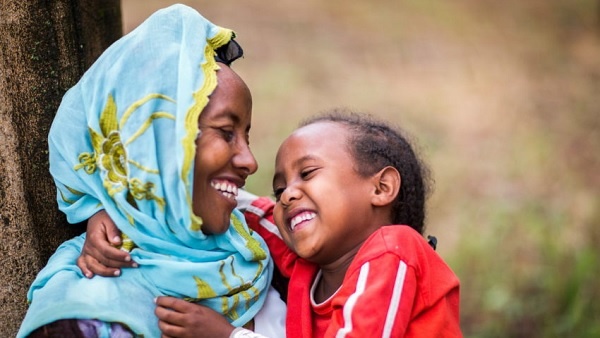
(UNICEF Ethiopia) – The National Situation Analysis of Children and Women in Ethiopia examines the situation through the lens of the well-being of children, adolescents and women. Ethiopia has scored noteworthy achievements, for example in monetary poverty reduction and in some aspects of health, nutrition and education. However, success is not yet occurring at a fast enough pace and large enough scale to achieve national and global goals. The policy and legal landscape sets the stage for responding to all elements of the Convention on the Rights of the Child (CRC) and the Convention on the Elimination of All Forms of Discrimination Against Women (CEDAW). However, full implementation and enforcement of national policies and legislation is essential to effect meaningful improvements for women, children and all members of Ethiopian society.
Executive Summary
With aspirations to become a low-middle-income country by 2025, Ethiopia has made some strides with respect to the Sustainable Development Goals (SDGs). However, Ethiopia’s rank of 173rd out of 189 countries on the Human Development Index indicates that, while the country is on the path, it has a way to go to reach its destination in terms of inclusive, sustainable development for all. This report examines the current national context and Ethiopia’s progress in safeguarding the rights and improving the welfare of children, adolescents and women in different realms. It also identifies causes of key shortfalls and inequities to directly focus on issues that need to be addressed through risk-informed, equity-focused efforts. Findings and insights presented in the report are based on nationally endorsed data sources, such as the Ethiopia Demographic and Health Survey (EDHS), Ethiopia Mini Demographic and Health Survey (EMDHS), Household Consumption and Expenditure Survey, budget analyses, published scientific literature, and sector-specific analyses and administrative data (e.g., the Health Management Information System and Education Management Information System). The body of the report includes specific data sources for all cited data.
The National Contest
There has been tremendous progress in monetary poverty reduction (from 45.5 per cent in 1995/1996 to 23.5 per cent in 2015/2016). However, children in present-day Ethiopia bear a greater poverty burden than adults: 32.4 percent of children under 18 compared with 29.6 per cent of adults are monetarily poor in 2011. Additionally, 88 per cent of children live in multi-dimensional poverty, experiencing deprivations in domains such as health, nutrition, housing, education and/or water, sanitation and hygiene (WASH). Poverty in women is multi-faceted and linked to a lack of women’s economic, social and political empowerment, including their access to and control over information, services, resources and commodities.
At a macro level, Ethiopia’s economic growth has outperformed many countries in recent years. Between 1999/2000 and 2016/2017, the country’s Gross Domestic Product (GDP) per capita increased from US$ 129 to US$ 863. However, the rate of economic growth has slowed slightly in recent years (10.2 per cent in 2017, projected at 9.7 per cent for 2019 and 9.9 per cent for 2020). This and other economic realities (e.g., double-digit inflation, low public saving rates, rising debt levels) can have major implications in terms of public finance for children. Public spending issues already exist with respect to: (1) the overall amount of resources made available for child- and adolescent-sensitive service delivery, (2) how available resources are allocated, and (3) how necessary resources are mobilized through a diversified funding base. A 2018 UNICEF-supported SDG financing analysis estimated that achieving child-sensitive SDGs would require approximately US$ 230 per capita, per year–far higher than the estimated investment of US$ 40 per capita in 2018.
Demographic changes occurring within the country have a direct bearing on women and children. With the country’s rapid population growth rate (currently 2.85 per cent), Ethiopia’s estimated 2019 population of 98,665,000 will double in size by 2050. This growth is largely spurred by high fertility in rural areas and among the poorest women (each, on average, having more than five children). Urbanization is another demographic phenomenon that will shape the country’s development path. The current urbanization rate of 21 per cent is projected to increase to 31 per cent by 2037, driven largely by rural-urban migration. Outof-school adolescent girls constitute one of the largest groups of internal migrants, and they are highly vulnerable to adverse outcomes, such as poor livelihoods, exploitation and abuse.
